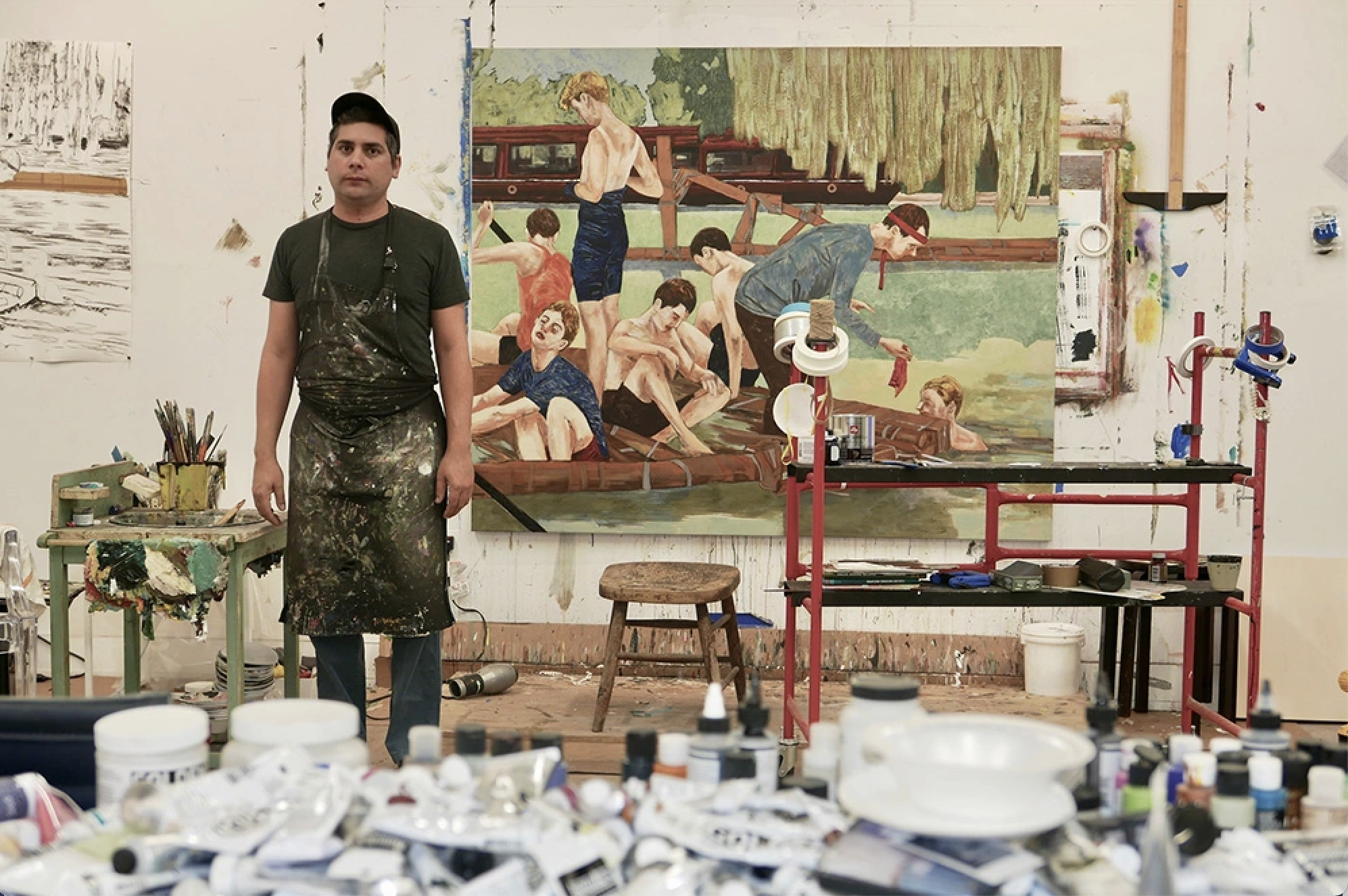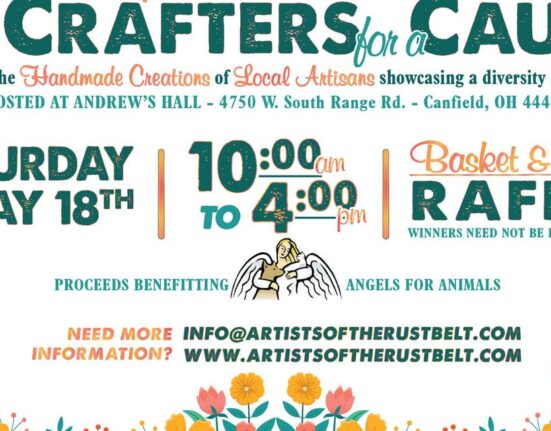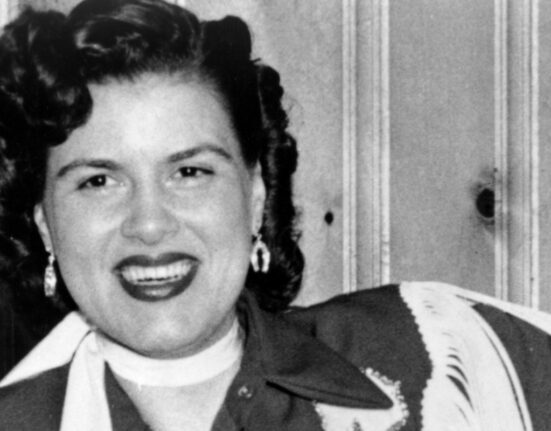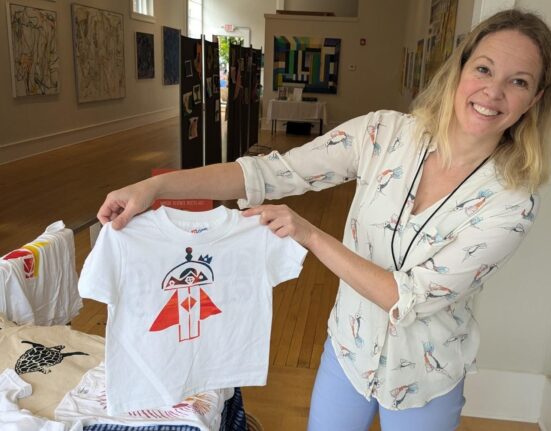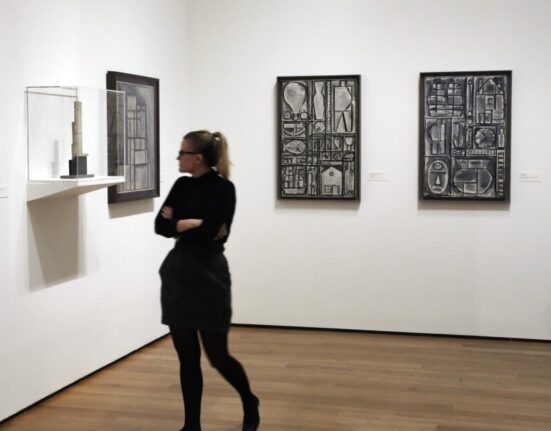Artists
Jeffrey Gibson, David Salle, Suchitra Mattai, and others weigh-in on the studio tools they love.
If you didn’t get everything you wanted for Christmas this year, the sleepy days between now and New Year’s make for the perfect downtime to do a little personal gift-giving (also: sales!). For artists, this might mean loading up on your favorite art supplies so you’re fully stocked come January. But where to start? What tool or material might make your studio life just that much better? Throughout the year, artists from David Salle to Basil Kincaid told us the studio tools they just can’t do without. Read below for end-of-year art supply inspo.
Jeffrey Gibson: Rulers
Jeffrey Gibson, 2023. Courtesy of the artist and his studio.
“Recently, I’ve really gotten into rulers. There’s a lot of geometry in the painting. The rulers—when you get one that actually is made for what you’re doing are kind of incredible and keep everything in order. I also absolutely have to have music. Some people in the studio play really great music.”
MikYoung Lee: Pipe Cleaners
Courtesy of Olivia Fitts and MiKyoung Lee.
“My tools and supplies have evolved and changed over the years. However, I have used twist ties and pipe cleaners to construct soft sculptures for the past fifteen years. To me, the twist ties represent commodity and consumerism. This material is flexible for me to play with. And I always feel connected to using thread in my work. I appreciate the delicacy and softness of the character in the thread as a material, which is a domestic element essential to our daily lives. I have a textile art background, and thread is a profound material that inspires me continuously about human history and culture.”
David Salle: Springy, Natural Hair Brushes
David Salle in his studio, 2023. Photo: Frenel Morris © David Salle/VAGA at Artists Rights Society (ARS), New York. Courtesy of the artist and Lehmann Maupin, New York, Hong Kong, Seoul, and London.
“Very long, soft, springy natural hair brushes—pliant to the point of being hard to control.”
Inka Essenhigh: One Shot Enamel Paint
Inka Essenhigh, 2023. Photo: Kyle Dorosz. Courtesy of Inka Essenhigh.
“I paint with sign painter’s enamel, a brand called 1 Shot. There are a few artists that use it like Marilyn Minter, Gary Hume, and most notably, Jackson Pollock, whose drip paintings were made with enamel paint. Oil doesn’t drip like that. Enamel is liquid and I love to make crisp clean shapes and lines that get sanded down and layered up.”
Stefan Bondell: Rolling Ladders
Stefan Bondell at this Hudson Valley studio. Courtesy of the artist.
“I love my ladders. They are industrial metal rolling ladders. They come from my parents’ postcard company. People spent years counting and packing postcards on them, and I love to think I go up and down them making marks in space to create images of our time and history. They are a continuation of my family narrative.”
Basil Kincaid: Arches Hot Press 100% Cotton Paper
Basil Kincaid. Photo courtesy of the artist.
“My quilting practice focuses more so on materials that have an embedded emotional story, or some form of lived experience. When it comes to drawing though (which informs the quilts’ compositions), crayons are one of my all-time favorite art supplies. In the past few years I’ve also grown to enjoy a variety of oil pastels; the less expensive ones offer a different texture from the higher-end ones, and I like what happens when the full spectrum is in the mix. Beyond crayons and oil pastels, I adore my tried and true micron pens. Hot-pressed papers, too. My favorite paper for drawing right now, aside from regular printer paper, is the Arches Hot Press 100% cotton paper—it’s a dream to draw on.”
Hernan Bas: Vintage Industrial Rotating Storage Bins
Rotating storage bins. Courtesy of the artist.
“Not sure if these qualify as a tool, but the most useful item in my studio has proven to be my three vintage industrial rotating storage bins. They are basically towers of Lazy Susans, originally used to organize different-sized nuts and bolts in workshops, but they have been a lifesaver for organizing paints, etc. Before getting them I dealt with ridiculous piles of paint tubes on a long table, all buried together—it would take me half an hour to find the color I was looking for! Also, if you have limited wall space like I do, the fact that they’re freestanding is a huge bonus.”
Jeffrey Meris: a CNC Waterjet
Jeffrey Meris in his studio. Photo by Marc Tatti.
“A CNC Waterjet. This machine uses pressurized water and garnet to cut through virtually any material along an XY axis. The CNC Waterjet changed my practice substantially. The only downside is that MakeHaven is in New Haven, which brings me to my second favorite tool, my car. She’s old and white so I call her Betsy White. Most of my friends think that I am crazy for owning a car in New York City but then I can do cool things like work on ceramics in Harlem and get it fired in New Jersey or cut aluminum in Connecticut and finish assembly in my studio in Harlem.”
Zoya Cherkassky: An Antique Easel She Was Gifted
Zoya Cherkassky, 2023. Photograph by Tony Wang. Courtesy of the artist and Fort Gansevoort.
“I have a very old easel that used to belong to my gallerist in Tel Aviv. It was his father’s and he used it to display paintings on it. I saw it one day and I was like—I need that. It’s a very good easel because it has a handle that goes from the ground up. I love it.”
Suchitra Mattai: Weaving Stands Built by Her Studio Manager
Suchitra Mattai. Photo: Heather Rasmussen. Courtesy of the artist and Roberts Projects, Los Angeles.
“My studio manager Lucy built me these “weaving” frames/stands for creating my sari tapestries and they are elegant and awesome! Rope net gets stretched on them and then I weave strips of saris into the grid to create the tapestries. It’s not exactly “weaving” but an invented process. The back-and-forth motions and knots make it similar to embroidery, a process that I also use a lot in the studio. The stands have changed my life!“
More Trending Stories:
Art Dealers Christina and Emmanuel Di Donna on Their Special Holiday Rituals
Stefanie Heinze Paints Richly Ambiguous Worlds. Collectors Are Obsessed
Inspector Schachter Uncovers Allegations Regarding the Latest Art World Scandal—And It’s a Doozy
Archaeologists Call Foul on the Purported Discovery of a 27,000-Year-Old Pyramid
The Sprawling Legal Dispute Between Yves Bouvier and Dmitry Rybolovlev Is Finally Over
Follow Artnet News on Facebook:
Want to stay ahead of the art world? Subscribe to our newsletter to get the breaking news, eye-opening interviews, and incisive critical takes that drive the conversation forward.

